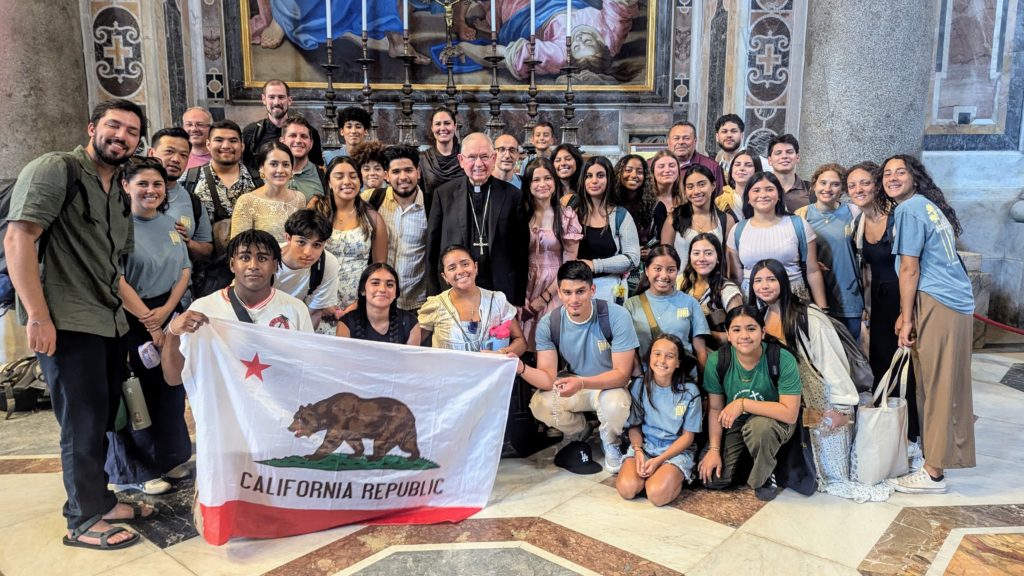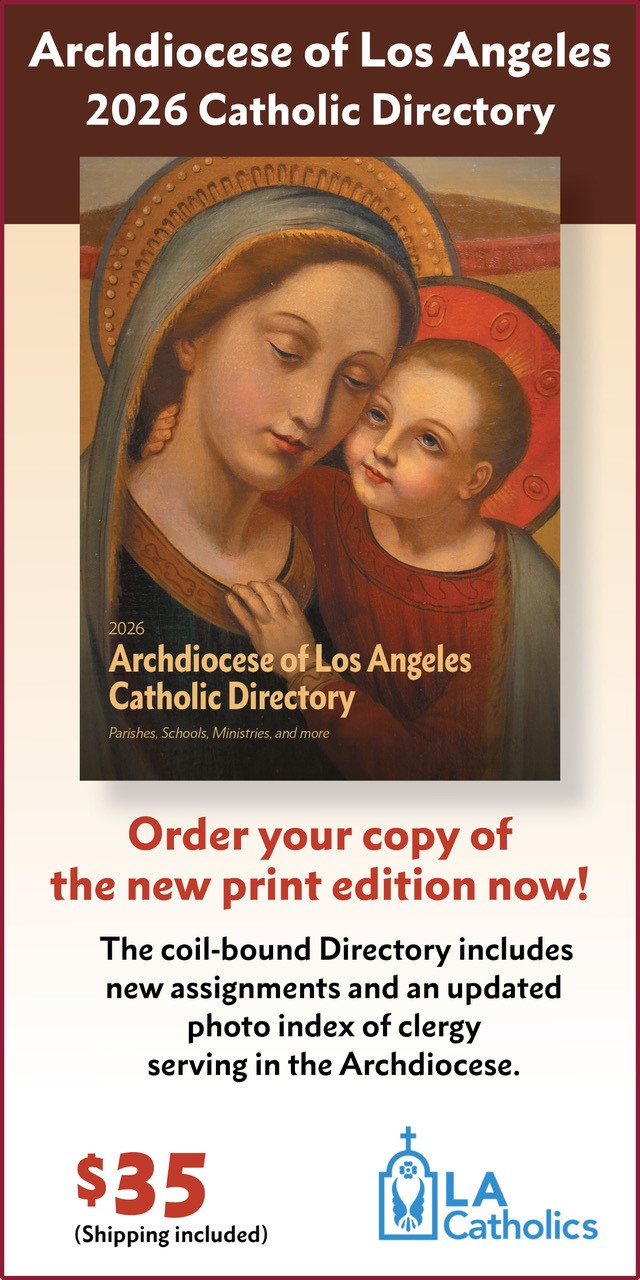Before crossing the Holy Door of St. Peter’s Basilica, our group needed one more pep talk.
“The very fact that this door is open is good news,” said the priest to the crowd of youth from Los Angeles, Washington, D.C., and Georgia that had coalesced beneath the brooding sculpture of St. Paul that keeps watch over St. Peter’s Square.
“Often in our lives, it seems that there are closed doors everywhere. In this world, our enemy, the devil, tells us that in front of several situations, there is no way back.”
But here at the entrance to the church built over St. Peter’s tomb, the priest told us, a door stood wide open, a sign during this Jubilee Year that God had already opened a “way back” for each of us through his mercy, like he did for Peter, who had betrayed Christ.
“That is why it is a Jubilee of Hope!” said the priest. “So take this moment seriously.”
For our group of 40 pilgrims from St. John the Evangelist Church in South LA, this moment on the morning of Aug. 4 was the climax of a pilgrimage of surprises that began nine days earlier at the Shrine of Our Lady of the Rosary of Pompeii, near Naples. Our plans for a Holy Door visit to St. Peter’s on another day had been scuttled weeks earlier. We couldn’t make a new reservation. Yet after talking our way past some Italian bureaucracy, here we were.
And this was not the first wide-open door we’d found in Italy.
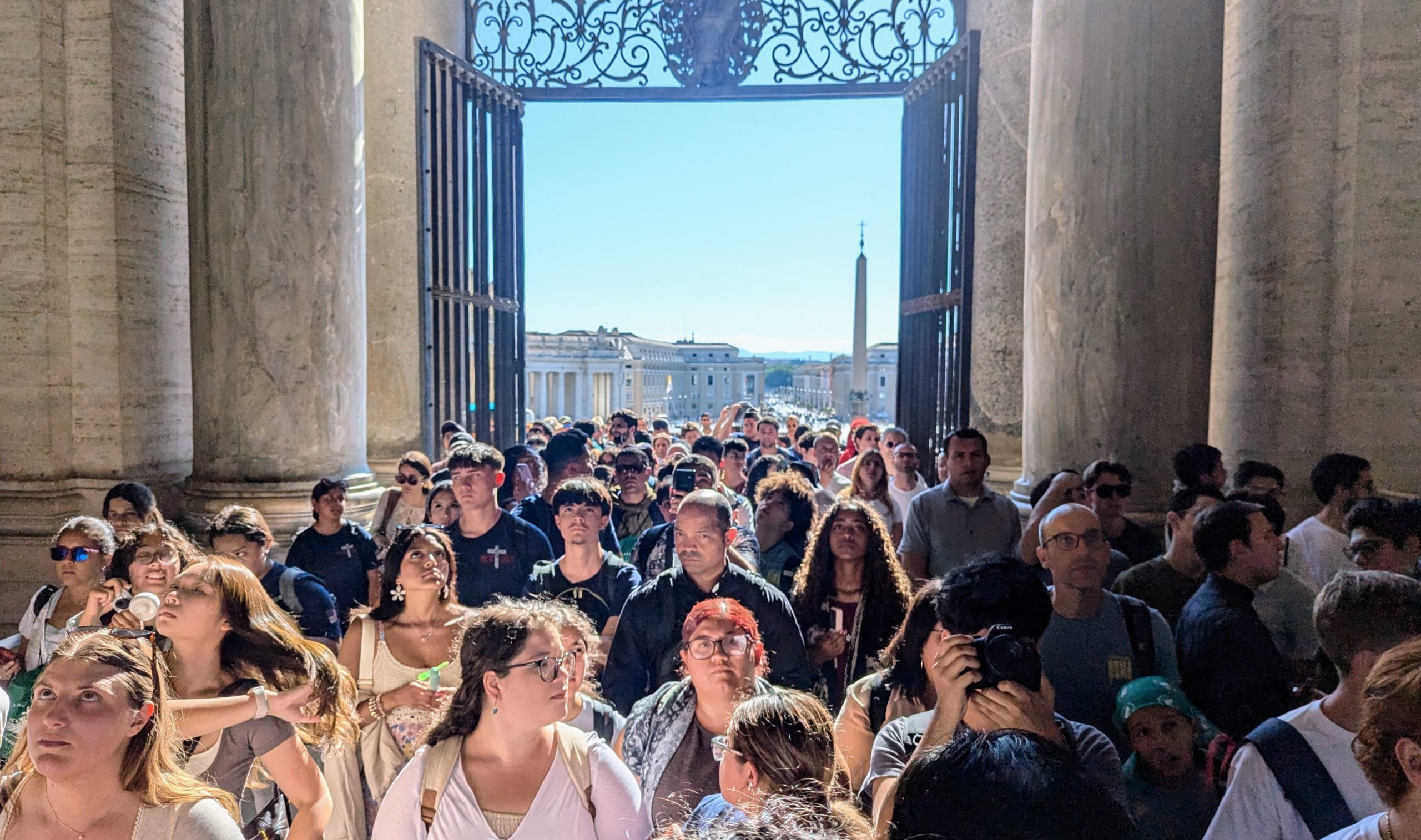
The entire pilgrimage was a celebration of the “unthinkable.” Who could have imagined just a few months ago that we’d be visiting Rome to pray with an American pope? Or that, with the apocalyptic warnings of sweltering heat in Europe this summer, unseasonably mild weather would follow us between the shrines and historical sites of southern Italy, in some of the country’s hottest places?
In Salerno, we visited the Cathedral of Saint Matthew, where tradition holds that the remains of the tax collector-turned-missionary have rested — and protected the city from destruction — for the last 1,000 years. The next day, we celebrated Mass and prayed at the shrine of St. Francis of Paola, the 15th-century miracle-worker and founder of the Minim religious order.
Further south, deep in the mountains of Calabria, we could hear wild boars as we slept on wooden bunk beds in a retreat house near the shrine of St. Bruno, founder of the Carthusians. In the port of Bari, we visited the tomb of St. Nicholas (yes, the original Santa Claus), famous in those parts for interceding on behalf of women in search of a good husband. In the ancient stone city of Matera, one of the oldest continuously inhabited cities in the world, we — together with pilgrims from Texas — were welcomed by a newly installed archbishop through the doors of its Baroque cathedral.
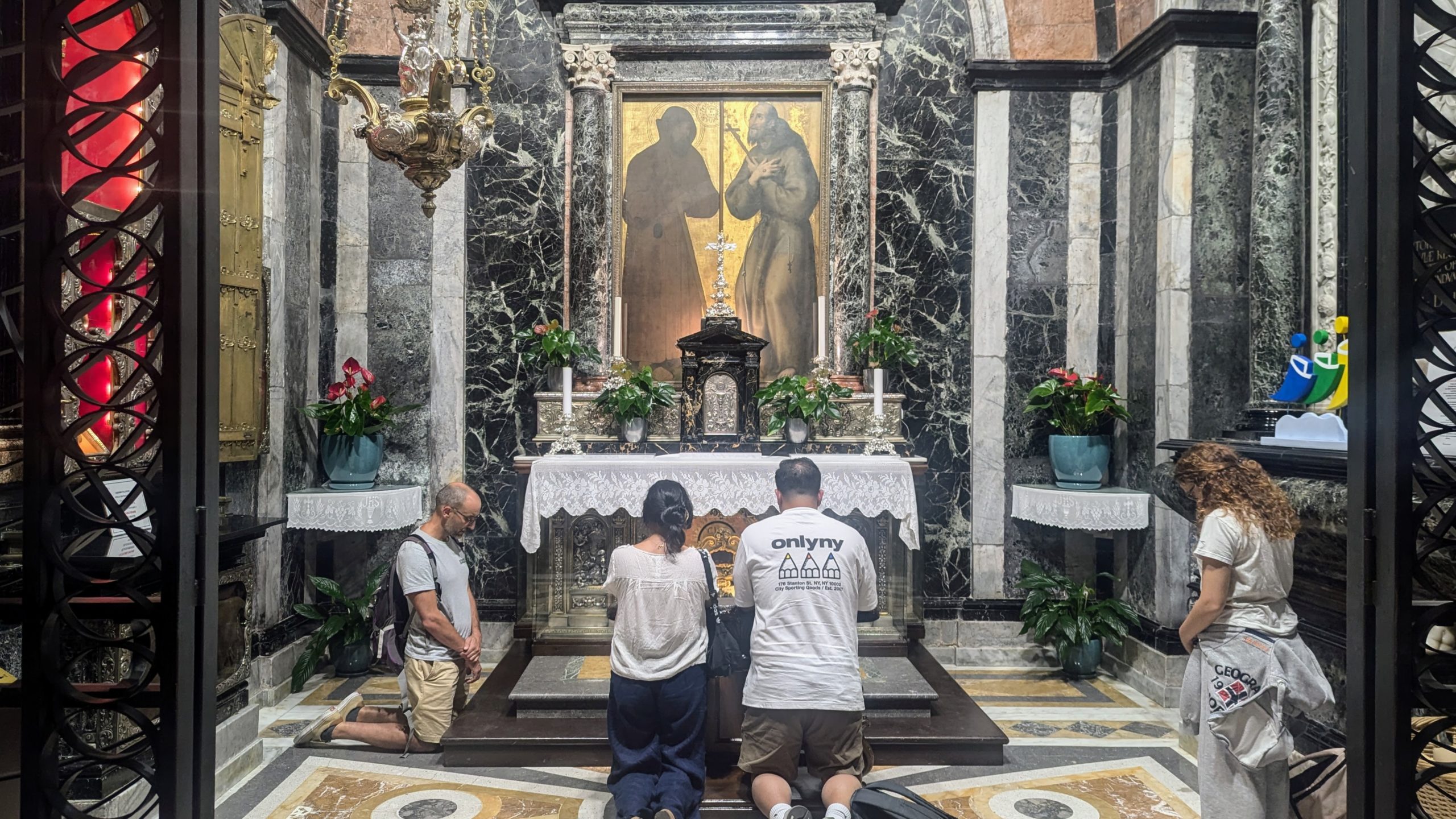
Our last stop before Rome was San Giovanni Rotondo, the city where St. Pio of Pietrelcina (Padre Pio) spent most of his religious life. As soon as we arrived, we had a chance encounter with a man who literally opened doors for us everywhere the next day: Dr. Giuseppe Lotti, who as a child grew up knowing the Italian mystic and whose father helped Padre Pio found a world-renowned private research hospital in the town.
These stops, while often scenic and always inspiring, weren’t for sightseeing or tourism. This was a pilgrimage, an opportunity for the youth to pray, reflect, and dialogue about the closed doors in their lives and ask for special graces to help them discern God’s plan for their future.
When we finally reached Rome’s Tor Vergata field for an outdoor vigil with nearly a million young people from around the world late on Saturday, Aug. 2, it was almost as if our host, Pope Leo XIV, had been snooping on the conversations in our pilgrimage bus.
“The most important choice is the decision about the direction of our life,” said the pope during a question-and-answer session with three preselected youth at the vigil. “What kind of man do you want to be? What kind of woman do you want to be?”
Leo, who as an Augustinian friar accompanied young people to similar World Youth Day events, didn’t speak in clichés or moralisms. He spoke of the risks posed by the technological algorithms that dominate lives in the 21st century, and the need for genuine relationships to build “good lives.”
The pope seemed fully aware that these youth were all wrestling with tough decisions, stubborn addictions, family crises — the kinds of closed doors that make us question the meaning of our existence.
“We learn to choose through the trials of life, but above all by remembering that we have been chosen,” said Leo from the event stage. “Our existence did not originate from our decision, but from a love that wanted us.”
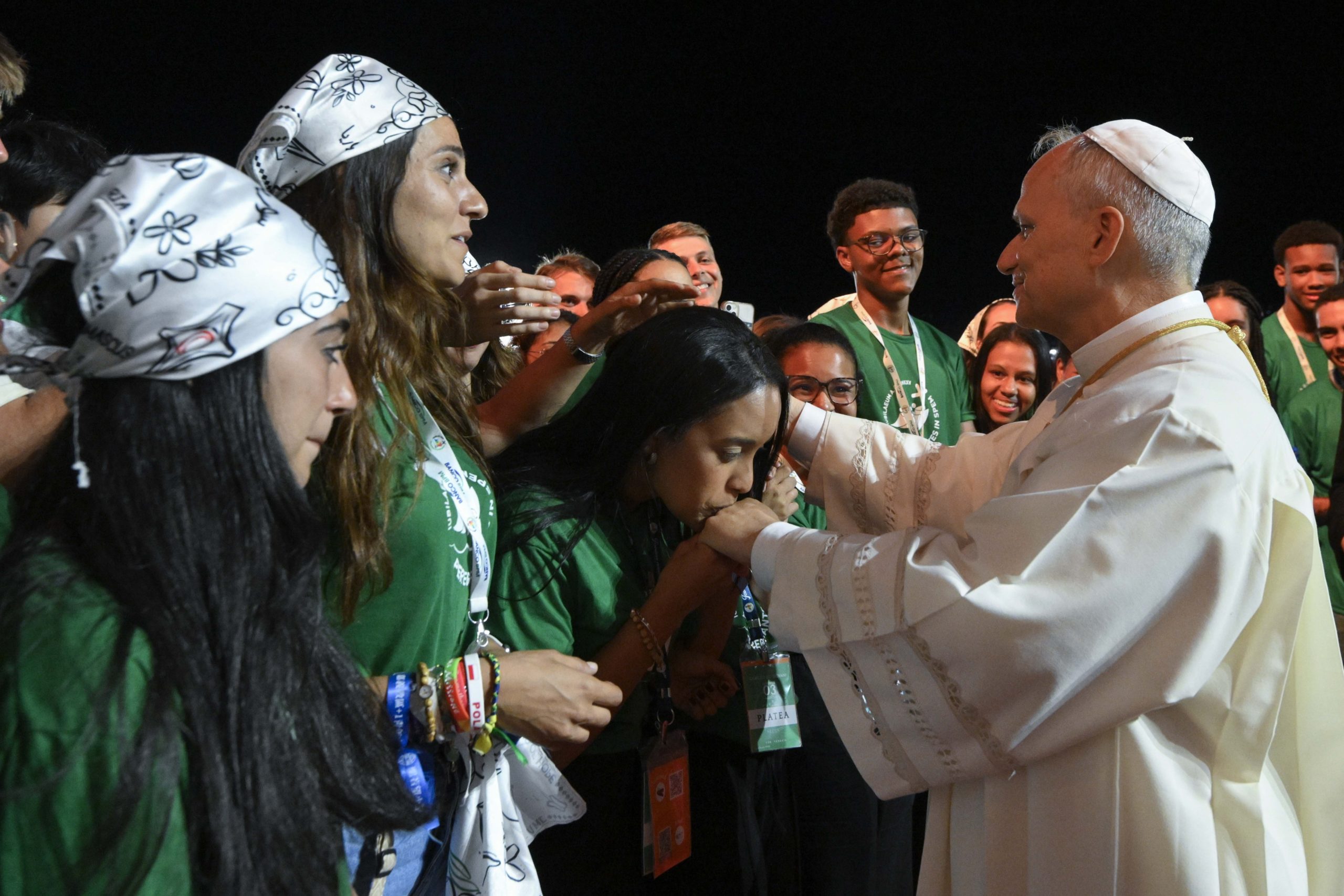
The response from the global horde of Catholic youth in Rome to the new pope was enthusiastic, to say the least. As the Popemobile passed by where I happened to be walking that evening, the crowd roared “Prevost! Prevost!” More than one banner carried quotes from Leo’s first address from the loggia of St. Peter’s. “God loves all of us, and evil will not prevail,” read one from Spain.
As the pope spoke, he was interrupted by multiple chants of “Viva el papa!” and “Leoneee!” But a few moments later, he brought the crowd to their knees in complete silence for a full half hour while leading Eucharistic adoration and benediction as a cool breeze swept across the dark field.
“There was no show or youthful overtones,” read an analysis from Italian newspaper “Il Foglio” that described the moments of adoration as “the heart of the vigil.”
“It wasn’t a question of approaching the language of young people, but of the quiet strength needed to bring them closer to Christian gestures.”
In the following hours, some of the inevitable challenges of staging an overnight camping vigil for a million people became apparent: A brief 2 a.m. rain shower roused us out of our sleeping bags in panic, and during the outdoor Mass the next day, distributing holy Communion to everyone proved tricky.
But the triumph of this particular Jubilee event (apart from the miraculously mild summer temperatures that weekend), I believe, was that by mobilizing a million Catholics, it offered the world evidence that God hasn’t given up on a society that seems intent on forgetting him. For those of us who were there, I can’t help but think, at least a million new doors were opened.
